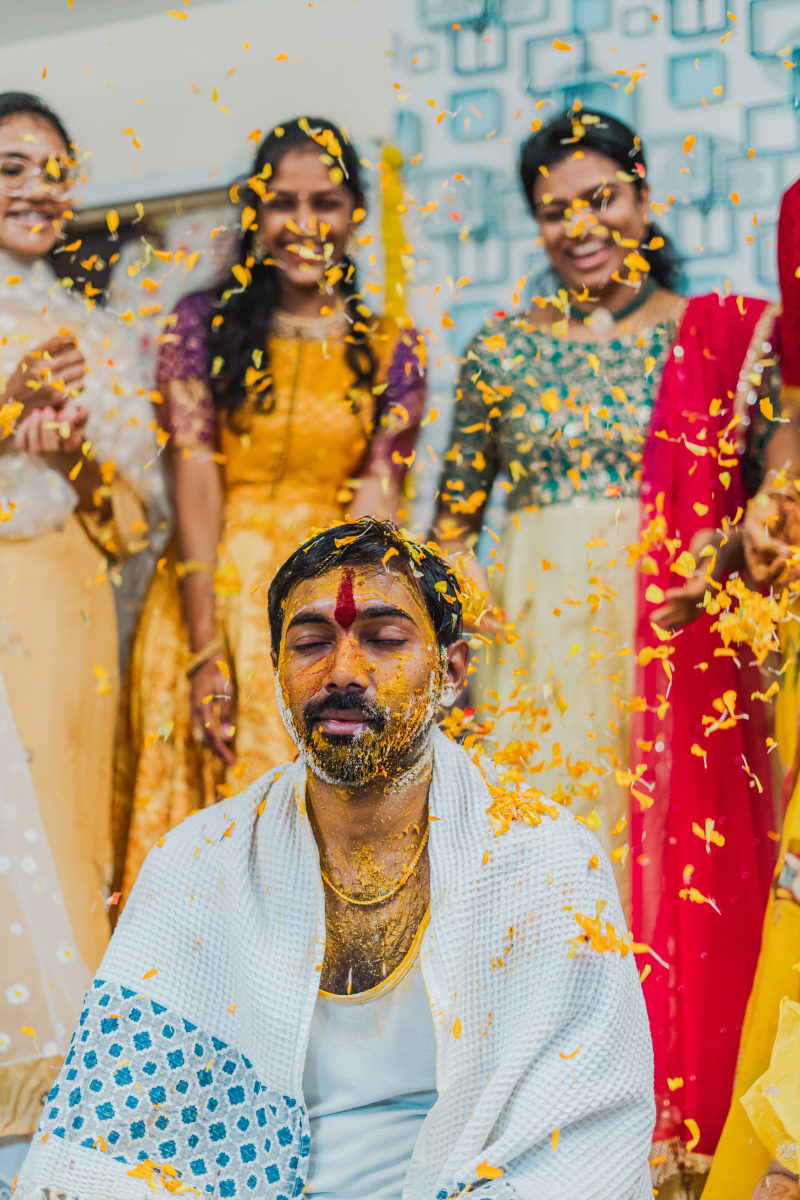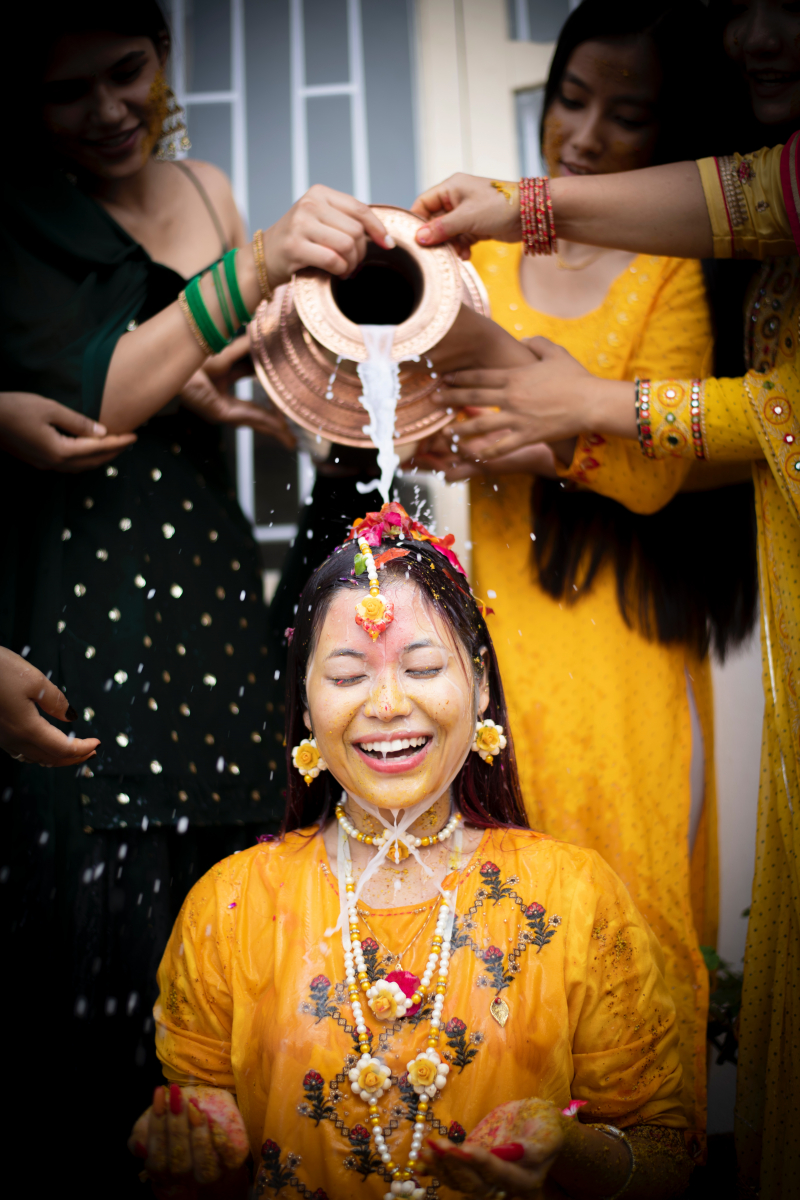Bana Betai ritual is a distinctive feature of Jain weddings
The Bana Betai ritual, which differs from the more well-known Haldi ceremony in other Indian traditions, becomes a distinctive and beloved feature of Jain weddings. Bana Betai, which has its roots in the extensive Jain legacy, has special significance. Both the bride and the groom participate in a symbolic and holy deed during this time-honored tradition. Besan, often known as chickpea paste, is delicately rubbed on each person's body. This besan represents the removal of impurities, the purifying of their spirits, and the getting ready for the upcoming divine marriage.
A ceremonial wash is performed after this mild application, further emphasizing the purity of the deed. The sacred bath represents both physical and spiritual rebirth, washing away not just the besan but also any remaining pollutants or bad energy. It represents a symbolic entry into the married journey, the letting go of the past, and the beginning of a new chapter.
Bana Betai ceremony serves as an important reminder that Jain weddings are about spiritual development, cleansing, and the profound commitment to a life lived in harmony. The bride and groom set out on a road where love, tradition, and spirituality blend, establishing a link that is not only lovely but also profoundly holy, in the midst of the besan and the purifying waters.












